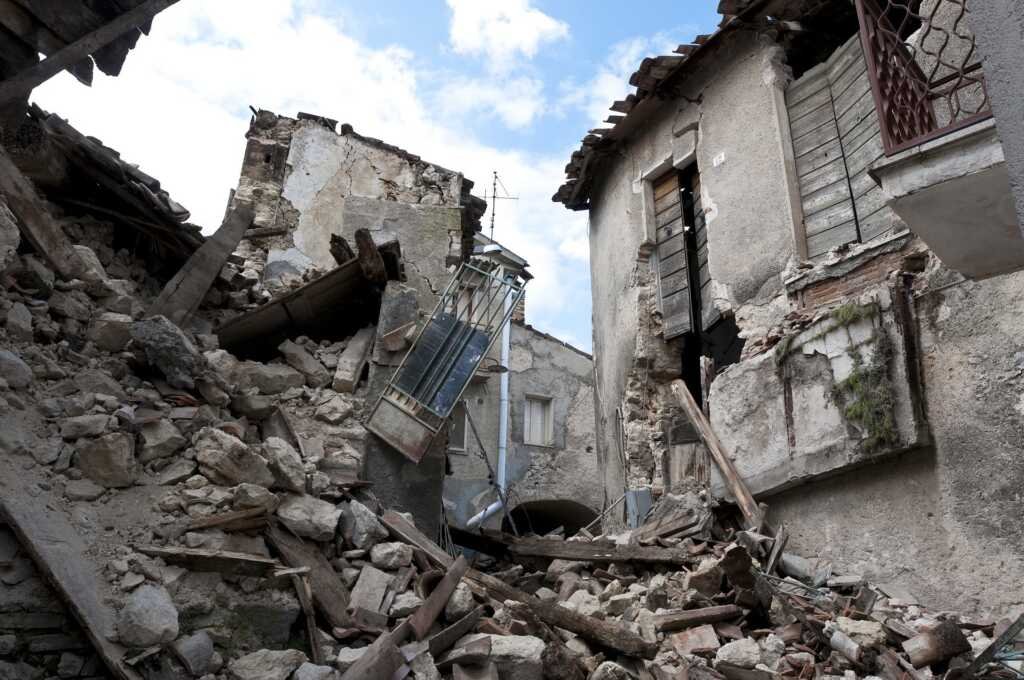For optimal viewing experience, it is recommended to access this page on a computer or large tablet.
BELLRINGERS
ESS3: Earth and Human Activity
MS ESS3-2
Natural Disasters and Predicting Catastrophic Events

What do you think causes earthquakes?
Draw a diagram as part of your explanation.
Common Misconceptions
These misconceptions were identified by AI ChatGPT.
- Earthquakes can be accurately predicted with 100% certainty.
- Animals can predict earthquakes before they happen.
- Changes in the weather can predict earthquakes.
- Strange smells, lights or unusual behavior of animals can predict earthquakes.
- There is a specific sign or pattern that always precedes an earthquake.
- Seismic monitoring equipment can provide an exact time and location of an upcoming earthquake.
- The magnitude of an earthquake can be predicted in advance.
- The frequency of small earthquakes can predict a larger one.
- Earth’s magnetic field can be used to predict earthquakes.
- It is possible to predict how long an earthquake will last.

What warning signs do you think scientists
have that a volcano is about to erupt?
Common Misconceptions
These misconceptions were identified by AI ChatGPT.
- There is an unlimited amount of fresh water on Earth.
- All fresh water on Earth is safe to drink.
- Fresh water is not affected by pollution or human activities.
- Desalination is a cost-effective and widely used method of producing fresh water.
- Groundwater is not affected by surface water use or drought.
- Fresh water is evenly distributed across the Earth’s surface.
Additional Resources

Use this diagram to help you explain how changes in pressure on the ocean floor are detected and communicated so that people can have warning of an incoming tsunami.
Common Misconceptions
Tsunamis only happen in the ocean: While tsunamis are most commonly associated with the ocean, they can also occur in large lakes and rivers.
Tsunamis are just big waves: Tsunamis are actually a series of waves that can travel at speeds of up to 500 mph. They can cause significant damage and flooding when they reach the shore.
Tsunamis only happen in certain parts of the world: Tsunamis can occur anywhere there is a large body of water, including both coastal and inland areas.
Tsunamis can be stopped by barriers: Tsunami barriers, like seawalls, are not effective in stopping tsunamis. They can only reduce the height of the wave, but they cannot prevent flooding.
Tsunamis are easy to predict: It is difficult to predict tsunamis because they can happen unexpectedly and without warning. Early warning systems and evacuation plans are important for reducing the risk of injury and death during a tsunami.

This map shows the locations of buoys that are used to detect and communicate changes in pressure that might signal an underwater earthquake that could lead to a tsunami.
What do you notice about the location of all the buoys?
Why do you think it’s important to continuously monitor data received from these buoys?
Common Misconceptions
Tsunamis only happen in the ocean: While tsunamis are most commonly associated with the ocean, they can also occur in large lakes and rivers.
Tsunamis are just big waves: Tsunamis are actually a series of waves that can travel at speeds of up to 500 mph. They can cause significant damage and flooding when they reach the shore.
Tsunamis only happen in certain parts of the world: Tsunamis can occur anywhere there is a large body of water, including both coastal and inland areas.
Tsunamis can be stopped by barriers: Tsunami barriers, like seawalls, are not effective in stopping tsunamis. They can only reduce the height of the wave, but they cannot prevent flooding.
Tsunamis are easy to predict: It is difficult to predict tsunamis because they can happen unexpectedly and without warning. Early warning systems and evacuation plans are important for reducing the risk of injury and death during a tsunami.
